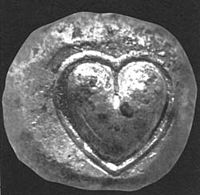Birth Control in the Ancient World
By the third century, our old favorite,
Silphium, was extinct. Overharvested,
the plant had been worth its weight
in silver for a generation.
Gone forever were the bright yellow
flowers, the glossy, deeply lobed
leaves. We turned next to a close
relative, asafoetida, a pungent spice,
yes, but much less effective.
Besides, our breath smelled
always of fermenting fish;
the men started to complain;
thus the population swelled.
Queen Anne’s Lace grew wild
in the countryside; we brewed strong
tea or simply chewed the hard little
grains dry after the act…. If that
didn’t work, we tried artemesia,
abortifacient, only toxic in excess —
Artemis, goddess of women, protector
of childbirth, let us down rather more
frequently than we deserved.
The truly desperate ones might
gorge themselves on pomegranates;
the red juice stained their lips,
made them look fevered; sometimes
that did the trick. By the twelfth
century, only a few midwives knew
which herbs prevented the seed from
planting itself; they were banished
as witches and we lost that knowledge
for five hundred years — not so long
a time that we didn’t remember what it
had felt like, to love as often
as we liked without consequences.




this has to be very nearly a perfect poem
LikeLike
Asafoetida, also known as hing, in India. Where garlic and onion are not permitted it is preferred. Birth control. My my.
LikeLiked by 1 person